By Tina Vasquez, for The Children’s Book Review
Published: February 8, 2011
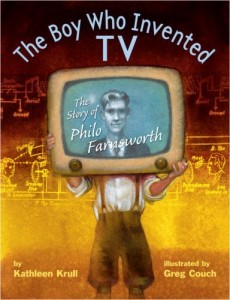 The Boy Who Invented TV: The Story of Philo Farnsworth
The Boy Who Invented TV: The Story of Philo Farnsworth
By Kathleen Krull (Author), Greg Couch (Illustrator)
Reading level: Grade 2-5
Hardcover: 29 pages
Publisher: Knopf (September 2009)
Source: Publisher
Here’s an unsettling thought: Imagine life without television. I’m not just talking about modern televisions with their flat screens, HDTV, and streaming video; I’m talking about no TV’s, period. This may be the predicament we would have found ourselves in if it weren’t for Philo Farnsworth. In The Boy Who Invented TV: The Story of Philo Farnsworth, we learn about the boy genius who exhibited signs of greatness as young as age three when he drew detailed pictures of the inner workings of trains.
As a young boy, Philo’s heroes were inventors like Alexander Graham Bell and Thomas Edison and though he was a dreamy, imaginative child, he was also very bound to reality. As the oldest of five children, Philo had so many obligations and chores to tend to that it left him little time for his favorite pastimes: reading and practicing his violin. Though he was mechanically-minded, Philo dreamed early on of becoming a touring musician. That dream seemed to become less important when his family moved from Utah to Idaho and had electricity for the first time. It was during that time that Philo began experimenting around the house with homemade mechanisms, immersing himself in science magazines and winning contests for his surprisingly advanced engineering ideas.
Young readers will be in awe of Philo’s incredible mind and adults will appreciate his tenacity and strong work ethic. In The Boy Who Invented TV, you’ll learn that Philo originally came up with the idea for televisions when he was just 14, but it took quite a few years for the idea to come to fruition. Author Kathleen Krull actually does a fantastic job of explaining Philo’s many pursuits, taking technically complicated subject matter and turning it into straightforward, easy to follow subject matter that is both informative and interesting. With her words, she paints the perfect picture of the young boy genius and illustrator Greg Couch brings her words to life. Couch’s muted, cloudy illustrations are realistic and warm, providing insight into the America of the early 1900’s.
The Boy Who Invented TV would make the perfect addition to any classroom or serve as a great bedtime story for children as precocious as Philo Farnsworth. And who knows? This may be the story that inspires America’s next great inventor.
Add this book to your collection: The Boy Who Invented TV
From Rosalyn Schanzer
If you happen to be in Kentucky on Thursday, June 18, I will be speaking three times at the Fourth Annual Fleming County Reading Festival. And the good news is that the first 100 or so people to get there will receive a free signed copy of one of my books! You can find the festival at 1449 Elizaville Road, Flemingsburg, Kentucky 41041. It’s on the Fleming Mason Energy grounds on Highway 32, which is not very far south of Cincinnati Ohio. Here’s my part of the schedule:
11:00 (professional development session for teachers) Killing the Bugs before Drinking Them: How to Make Non-fiction Spring to Life
1:00 (grades K-3) The Old Chisholm Trail - a cowboy song with costumes and sound effects provided by the audience…and maybe a surprise title as well!
3:00 (4th grade and up) What Darwin Saw; the Journey that Changed the World
From Kathleen Krull:
An interview with Kathleen Krull will be posted to the Park Ridge (Illinois) Public Library blog (http://prkcs.wordpress.com/) on June 5. On June 22 she will be speaking at the 30th Annual Reading/Language Arts Conference at San Diego State University http://edweb.sdsu.edu/ste/documents/masters/summer_reading_conference_flyer_2009.pdf
From Jan Greenberg:
Jan Greenberg, editor - Side by Side New Poems Inspired by Art from around the World
CCBC (Cooperative Children’s Book Center) 2009 Annual Best-of-the-Year
NCTE (National Council Teachers of English) 2009 Notable Children’s Book in the Language Arts.
Bank Street College of Education Best Children’s Books of 2008
Christo and Jeanne-Claude: Through the Gates and Beyond,
NCSS (National Council of Social Studies) Social Studies Trade Books for Young People 2009
ALA (American Library Association) Notable Book 2009
Bank Street College of Education Best Children’s books of 2008.
Guest-posting for me today is Dorcas Hand, Library Goddess, aka Director of Libraries, at Annunciation Orthodox School in Houston, Texas. More information about the innovative "History as Story" program she describes is in her article "Adolescent Literacies: Reading, Writing, Thinking," Knowledge Quest (AASL), October, 2006.
I’m so honored to be asked to contribute a piece to this effort. I am fascinated by the literary nonfiction you all write, and can only hope one day to join your number as a writer. Kathleen asked me to write about our experiences together this past January. Kathleen visited the Annunciation Orthodox School in Houston for four intense days of assemblies and master classes focused around the writing of nonfiction.
Six years ago, I began a program for 4th-8th grade students called History as Story. I had several goals: an in-depth research project embedded in the regular curriculum; a writing project based on the research that required the students to take the facts and make them more than an encyclopedia recitation. They need to turn the facts back into a story. And I wanted to move beyond the “talking heads” author assembly programs to allow the students to interact with an author long enough to make the visit more memorable. Master classes by a prominent author assist the students to understand how to write, in this case, how to write a story that uses only the facts. I recently heard Geraldine Brooks, who described how she follows the facts as far as they go, and then fills in the gaps. These students certainly aren’t to her stage of understanding, but the concept helped them accomplish the task.
My first guest author was Susan Bartoletti Campbell, followed by Jane Kurtz, William Durbin, Phil Hoose, Jennifer Armstrong, and this year Kathleen Krull. Inevitably, the authors tell the students some of the same things like “Show, don’t tell,” and use your five senses to take us there. But the students experience the project in sequential years with different authors, different books as models, different topics and somewhat different assignments. When I look back to samples saved from the first year, I see broad improvement in both actual writing, and in understanding of how to use the technique of story to improve understanding of facts.
Fourth graders write travel journals as if they are visiting the country they have been researching. They must use details from the research like weather, famous places, language, money, clothing.
Fifth grade write biographical essays and journal entries as if they were famous explorers from history, ranging from Vasco da Gama to Sally Ride.
Sixth graders study Ancient History, and their topics for this project have been things like “Slavery in the Roman Empire,” or this year Cleopatra and Moses. The opening paragraph works to take a reader to the time and place, including details of life at the time. It is not possible to borrow sentences from an encyclopedia. And it is not possible to write the paragraph without any understanding of the topic.
Seventh graders write Biographies in Context, a 6-month research and writing effort where they work to understand the effect important (but not necessarily famous) from early American history had on their times as well as the effect the times had on them. The opening paragraph is written as a factual story to bring the person to life in some way; the rest of the paper is much more traditional.
Eighth graders research an American artist or athlete of the early 20th century – Ella Fitzgerald, Jesse Owens, Babe Ruth. They write a short piece that aims to bring to life a seminal day or time in the person’s youth, a point of decision or awakening to talent. Again, they must add to the basic biographical information details about life at the time and place where the incident takes place.
Exciting as this is for me, the librarian, it is also exciting for the teachers and the authors. The teachers appreciate that many of the kids achieve a deeper understanding of their topic through this writing process. The authors appreciate the opportunity to work with kids who are trying to do what you authors do professionally.
I choose authors that I think will have some credibility with the kids, meaning some of their books are of wide interest. Kathleen’s short biographies were really great for the teachers to use as they prepared for the visit. The visit included assemblies where Kathleen could introduce herself and her work, describing where and how she writes. Then there are the master classes, where she, 1-2 teachers and I worked with about 35 students at a time to begin their writing. They had completed the research before her arrival, but not begun the writing. It is very exciting to see what they do develop in a single hour.
Yes, the students are well prepared. But this project would not have nearly the life it has without the visiting authors. The variety in their books and in their personalities models for the students that writers are regular people just like them, except for the BIC trick. That would be “Butt In Chair,” Jane Yolen's wonderful acronym I learned from Kathleen. I’ve since seen the video where Jane Yolen explains the concept. Knowing that all of you have as much challenge practicing BIC as I do, I continue to be thankful that you all persist in the practice of BIC, modeling for the students the need for persistence in pursuit of excellent writing of nonfiction or any other form.
 One reason why Jim Arnosky’s books are so engaging is that he’s in them. He uses “I walked watchfully” and “I was crawling on my elbows” in a way most nonfiction authors shy away from. In his newest, Slither and Crawl: Eye to Eye with Reptiles, you are right there with Jim as he shares his fascination with snakes, lizards, turtles, alligators, and crocodiles. He answers the question most on my mind-- how can you get over your fear of these guys-- and lots of other questions budding naturalists will have. He paints many of these creatures as life-sized, and in four lavish fold-out spreads reveals more species and even more details (Sterling, ages 8-12).
One reason why Jim Arnosky’s books are so engaging is that he’s in them. He uses “I walked watchfully” and “I was crawling on my elbows” in a way most nonfiction authors shy away from. In his newest, Slither and Crawl: Eye to Eye with Reptiles, you are right there with Jim as he shares his fascination with snakes, lizards, turtles, alligators, and crocodiles. He answers the question most on my mind-- how can you get over your fear of these guys-- and lots of other questions budding naturalists will have. He paints many of these creatures as life-sized, and in four lavish fold-out spreads reveals more species and even more details (Sterling, ages 8-12).

I find that most kids are boggled to learn that discrimination against women was common and perfectly legal, and it wasn't that long ago. In
Almost Astronauts: 13 Women Who Dared to Dream, I.N.K.’s own
Tanya Lee Stone does us all a favor by giving this bias an exhilarating context. In a little-known-to-the-point-of-being-invisible episode in history, thirteen women passed all the tests to become astronauts, only to be turned back when NASA couldn't wrap its mind around the idea of women in space. More than twenty years before Sally Ride took off in 1983, the "Mercury 13" were fighters, dreamers, and serious role models way ahead of their time. Lots of great material here-- especially about women's history (the TV shows, books, and organizations that changed attitudes)--though kids might be most drawn to the drama of the stringent physical tests. Now appearing to starred reviews everywhere (Candlewick, ages 9 and up).

This April 30th, honor the Day of the Child with
Book Fiesta!, subtitled
"Celebrate Children's Day/Book Day; Celebremos El dia de los ninos/El dia de los libros."
Pat Mora's text is straightforward to the point of being nonfiction--an itemization of the coolest places to read books-- and in the back she includes helpful hints for families and teachers to emphasize literacy. The illustrations by
Rafael Lopez are boldly stylized in an almost Alice-and-Martin-Provensen way, and the entire production is, of course, totally bilingual (Rayo/HarperCollins,ages 4-8).
Turn off the TV, and read a book... about TV. My publisher might not

appreciate this association, but you could celebrate
TV Turnoff Week, starting this April 20th, by pre-ordering
The Boy Who Invented TV: The Story of Philo Farnsworth. Yes, we could blame our whole TV culture on a 14-year-old farm boy who dreamed up the first television back in 1920-- but wait, Philo thought he was inventing a force for good, and in later life wouldn't let his own sons watch what he decided was drivel. My biography, with startlingly electric paintings by Greg Couch (who also illustrated Sue Stauffacher's
Nothing but Trouble: The Story of Althea Gibson), won’t be out till this fall, but it’s been chosen as a Junior Library Guild Selection, which I'm calling momentum. Another
TV Turnoff Week starts September 20th, in time for the book’s actual pub date (Knopf, ages 8-12).

The cover of
You Never Heard of Sandy Koufax?! is a grabber. It's a 3-D vision of the mighty pitching that made this "Greek god of baseball" impossible to defeat from 1961 to 1966. Stats and facts dot the book, but trust me, you don’t even have to understand baseball to relish this story. Jonah Winter spins the tale in a folksy voice loaded with Brooklyn pizzazz. The illustrations of Andre Carrilho, the wizard who does those eerie distorted caricatures for the NYTBR, ooze style. Best of all is the narrative arc. This picture book's pace is smart and snappy, with triumph coming late in the book, as it did in life: Far from an instant success, this was "a guy who finally relaxed enough to let his body do the one thing it was put on this earth to do" (Schwartz & Wade/Random House, ages 4-9).

Now I know why Nic Bishop wins so many awards for his science books. The photos in his newest,
Nic Bishop Butterflies and Moths, take these magical aerial phenomena and magnify them again and again, propelling them to whole new heights. Gasps of awe will begin when a monarch butterfly caterpillar-- a bitsy thing magnified
45 times-- hatches and eats its old eggshell. Gasps will continue at each new photo of creatures gorgeous, creepy, bizarre, or just plain miraculous. Bishop's text works--conversational, fascinating--and a fold-out page demonstrates the principles that allow a butterfly to fly. He also explains his photo techniques, and how very laborious it was to set up these shots. Prediction: more awards for Nic Bishop (Scholastic Nonfiction, ages 4-8).

Robert Crowther's text and art aren’t full of wild personality, and technically
Robert Crowther's Pop-Up House of Inventions: Hundreds of Fabulous Facts About Your Home isn’t quite new, but an updating. Yet I dare anyone to to set this book down. Five intricately designed spreads fold out to reveal the details of a typical house's kitchen, living room, garage, bedroom, and most amusingly, bathroom. Hours of fun facts to entertain the family, from why the first washing machine was named Thor and how many names were in the first phone directory, to the title of the first book published for children, how the first raincoat came about, what country invented the bra.... (Candlewick, ages 3 and up).
So I’ve been having unusually convulsive nightmares, and I look over at my nightstand reading—the Newbery-winning
Graveyard Book by
Neil Gaiman. Is anyone else having this reaction??
...about many of the 2008 titles that just snagged ALA awards. In particular, Kelly Fineman totally called it—a whole year ago—for We Are the Ship, the Kadir Nelson landmark that was awarded the most honors, including the Sibert Medal for Best Informational Book of the Year.
 And now for three new biographies with wildly divergent approaches. “Gertrude is having fun and you’re invited. Don’t be late,” urges what may be the first children’s book to portray the author of “Rose is a rose is a rose is a rose.” Gertrude is Gertrude is Gertrude is Gertrude, by Jonah Winter, is a weird word portrait of Gertrude Stein, her partner Alice B. Toklas, and fortunate friends who happen to be famous--Picasso, Matisse, Hemingway. Like the works of the eccentric writer herself, the minimalist text is nonlinear, playful, sometimes downright nonsensical. Calef Brown contributes Maira Kalman-esque paintings that increase the sensation of being at the most fabulous party ever (Atheneum, ages 4-8).
And now for three new biographies with wildly divergent approaches. “Gertrude is having fun and you’re invited. Don’t be late,” urges what may be the first children’s book to portray the author of “Rose is a rose is a rose is a rose.” Gertrude is Gertrude is Gertrude is Gertrude, by Jonah Winter, is a weird word portrait of Gertrude Stein, her partner Alice B. Toklas, and fortunate friends who happen to be famous--Picasso, Matisse, Hemingway. Like the works of the eccentric writer herself, the minimalist text is nonlinear, playful, sometimes downright nonsensical. Calef Brown contributes Maira Kalman-esque paintings that increase the sensation of being at the most fabulous party ever (Atheneum, ages 4-8).
 Just look at the breathtaking front cover--all art, no type-- of Eleanor, Quiet No More: The Life of Eleanor Roosevelt, the play of light on ER's face and hair. Gary Kelley’s luminous paintings, on the cover and throughout, reveal a woman you wish you could get to know. Author Doreen Rappaport, in another one of her distinguished books, provides the next best thing-- this accessible, inspirational life story. Each page is punctuated with a pithy ER quote revealing the powerful arc of how she grew from a girl too scared to speak ("I wanted to sink through the floor in shame") to the most outspoken women of her day, proclaiming, "Government has a responsibility to defend the weak" (Hyperion, ages 9-12).
Just look at the breathtaking front cover--all art, no type-- of Eleanor, Quiet No More: The Life of Eleanor Roosevelt, the play of light on ER's face and hair. Gary Kelley’s luminous paintings, on the cover and throughout, reveal a woman you wish you could get to know. Author Doreen Rappaport, in another one of her distinguished books, provides the next best thing-- this accessible, inspirational life story. Each page is punctuated with a pithy ER quote revealing the powerful arc of how she grew from a girl too scared to speak ("I wanted to sink through the floor in shame") to the most outspoken women of her day, proclaiming, "Government has a responsibility to defend the weak" (Hyperion, ages 9-12).
 Also check out this cover portrait of our first President, minus his prissy wig and tooth-concealing attempt at a smile. In Big George: How a Shy Boy Became President Washington, he’s towering and broody: "George Washington wasn't afraid of anything, except making conversation." At this late date there isn't much new to say about him, and Anne Rockwell’s detailed text follows a similar drift to Suzanne Tripp Jurmain’s George Did It (2005)—mainly, that it was really hard for GW to do all he did. But Matt Phelan’s pencil and gouache illustrations do give a new angle on the great man-- Superman meets Heathcliff...meets a vampire? (Harcourt, ages 4-8)
Also check out this cover portrait of our first President, minus his prissy wig and tooth-concealing attempt at a smile. In Big George: How a Shy Boy Became President Washington, he’s towering and broody: "George Washington wasn't afraid of anything, except making conversation." At this late date there isn't much new to say about him, and Anne Rockwell’s detailed text follows a similar drift to Suzanne Tripp Jurmain’s George Did It (2005)—mainly, that it was really hard for GW to do all he did. But Matt Phelan’s pencil and gouache illustrations do give a new angle on the great man-- Superman meets Heathcliff...meets a vampire? (Harcourt, ages 4-8)
 Finally, who wouldn’t love a book with this sentence: “If I were an administrator or literacy coach in a middle school, I would encourage my faculty to conduct a school-wide author study of [insert your name here].” Well, Sharon Kane kindly inserted my name into her Integrating Literature in the Content Areas: Enhancing Adolescent Learning and Literacy, but never fear, she mentions plenty of other authors. Her book is packed with 300+ pages of tips for getting literature into the classroom—fiction, poetry, and (saints be praised) “The Why and How of Using Informational Trade Books,” whole chapters on incorporating biographies, how-to books, etc. An amazing resource (Holcomb Hathway, for teachers).
Finally, who wouldn’t love a book with this sentence: “If I were an administrator or literacy coach in a middle school, I would encourage my faculty to conduct a school-wide author study of [insert your name here].” Well, Sharon Kane kindly inserted my name into her Integrating Literature in the Content Areas: Enhancing Adolescent Learning and Literacy, but never fear, she mentions plenty of other authors. Her book is packed with 300+ pages of tips for getting literature into the classroom—fiction, poetry, and (saints be praised) “The Why and How of Using Informational Trade Books,” whole chapters on incorporating biographies, how-to books, etc. An amazing resource (Holcomb Hathway, for teachers).
 Trust Kathryn Lasky to be first up with what may end as one of the year’s best— One Beetle Too Many: The Extraordinary Adventures of Charles Darwin. It’s a sumptuous party for He-Who-Must-Not-Be-Named in certain swaths of the population. The title (which, with a vowel change, could have been One Beatle Too Many: The Story of Pete Best) refers to the famous incident in which young Charles found himself with three rare beetles and only two hands. Showing his dedication early on, he popped one bug in his mouth until he could get to his collecting bottle. The text goes on to shape Darwin into a flesh-and-blood being, and explains the “evolution” of his theories in ways that go down easily. Despite an abrupt ending (without even an author's note to provide more context), this scores points for addressing head-on how evolution fit in with Darwin’s religious beliefs, what creationism is, and the controversy hinted at by Lasky’s dedication: “In celebration of children, whose boundless curiosity gives them a right to know their history on Earth.” Matthew Trueman’s illustrations in mixed-media (the media including weeds and wildflowers) are to drool over (Candlewick, ages 9-12).
Trust Kathryn Lasky to be first up with what may end as one of the year’s best— One Beetle Too Many: The Extraordinary Adventures of Charles Darwin. It’s a sumptuous party for He-Who-Must-Not-Be-Named in certain swaths of the population. The title (which, with a vowel change, could have been One Beatle Too Many: The Story of Pete Best) refers to the famous incident in which young Charles found himself with three rare beetles and only two hands. Showing his dedication early on, he popped one bug in his mouth until he could get to his collecting bottle. The text goes on to shape Darwin into a flesh-and-blood being, and explains the “evolution” of his theories in ways that go down easily. Despite an abrupt ending (without even an author's note to provide more context), this scores points for addressing head-on how evolution fit in with Darwin’s religious beliefs, what creationism is, and the controversy hinted at by Lasky’s dedication: “In celebration of children, whose boundless curiosity gives them a right to know their history on Earth.” Matthew Trueman’s illustrations in mixed-media (the media including weeds and wildflowers) are to drool over (Candlewick, ages 9-12).
 Among the millions and billions of Lincoln titles (of which I will have one, Abraham Lincoln Tells a Joke, in 2010), one of the most un-put-down-able is Chasing Lincoln's Killer. James L. Swanson has taken his adult bestseller Manhunt: The 12-Day Chase for Lincoln's Killer and refashioned it with verve for young adults. “Chase” is the operative word—this search for John Wilkes Booth and his conspirators moves at a rip-snorting clip, aided by lots of just-what-you'd-want-to-know details and an energetic design in sepia printed on creamy stock (Scholastic, ages 12 and up).
Among the millions and billions of Lincoln titles (of which I will have one, Abraham Lincoln Tells a Joke, in 2010), one of the most un-put-down-able is Chasing Lincoln's Killer. James L. Swanson has taken his adult bestseller Manhunt: The 12-Day Chase for Lincoln's Killer and refashioned it with verve for young adults. “Chase” is the operative word—this search for John Wilkes Booth and his conspirators moves at a rip-snorting clip, aided by lots of just-what-you'd-want-to-know details and an energetic design in sepia printed on creamy stock (Scholastic, ages 12 and up).
 A big “wow” goes to How Weird Is It? A Freaky Book All About Strangeness by Ben Hillman. With alluring chapters like “Fungus Is Family” and photos cleverly Photo-shopped for maximum drama, this looks like a tabloid-y item you might hand to the most reluctant of reluctant readers. Surprise—it’s a science book. A real one, with unsourced but fascinating information about neutron stars, the Big Bang, dark energy, plagues, ghost particles, bizarre animals, what Martians might look us (us), all the latest hot topics in science. For any reader, reluctant or otherwise (Scholastic, ages 8-12).
A big “wow” goes to How Weird Is It? A Freaky Book All About Strangeness by Ben Hillman. With alluring chapters like “Fungus Is Family” and photos cleverly Photo-shopped for maximum drama, this looks like a tabloid-y item you might hand to the most reluctant of reluctant readers. Surprise—it’s a science book. A real one, with unsourced but fascinating information about neutron stars, the Big Bang, dark energy, plagues, ghost particles, bizarre animals, what Martians might look us (us), all the latest hot topics in science. For any reader, reluctant or otherwise (Scholastic, ages 8-12).
Finally, we say farewell to 2008 titles (while wondering if the ALA committees will reward any of them come January 26). My apologies to the ones I didn’t get to, like Brenda Z. Guiberson's purely poetic Ice Bears… the dreamy All About Sleep From A to Zzzz by Elaine Scott (drawings by John O'Brien!!)… the truly niche-filling Sing My Song: A Kid's Guide to Songwriting by Steve Seskin... Sandra Markle's innovative Animals Christopher Columbus Saw: An Adventure in the New World…. what else did I miss???
 In deciding which new nonfiction books to urge for the holidays, I’m squeezing my thoughts into one mother-of-all-recommendations: Nonfiction Writing from the Inside Out: Writing Lessons Inspired by Conversations with Leading Authors (Scholastic).
In deciding which new nonfiction books to urge for the holidays, I’m squeezing my thoughts into one mother-of-all-recommendations: Nonfiction Writing from the Inside Out: Writing Lessons Inspired by Conversations with Leading Authors (Scholastic).
Usually, the teaching of writing emphasizes fiction and poetry, all well and good, but it’s expository writing that takes the cake in real life. The entire nonfiction writing process-- how to organize, research, think about a topic, find a voice, convince or inform-- these are skills that will carry students through life, helping them to be clear-thinking citizens and better at whatever career they pursue.
The author of this book, Dr. Laura Robb, has been a noted teacher for over forty years. I can’t say enough about the book—it’s the best possible gift for teachers, librarians, parents, anyone who wants their children to be able to write clearly. She details, step by illuminating step, how to get kids to write essays, plus book reports, diaries, interviews, letters, indeed any kind of creative writing that calls for persuasiveness and simplicity. As Dr. Robb writes, “We must help our student writers find their voices and approach nonfiction writing as an exciting craft they will want to fine-tune throughout their lives.” Her book is one savvy way of helping students open that door to becoming lifelong learners.
And I swear I’m not pushing it because she interviewed me. The authors from whom she gleans pointed tips about what makes good writing tick include Russell Freedman, Kathryn Lasky, Walter Dean Myers, James Cross Giblin, and a gaggle of other professionals.
Happy holidays, Laura Robb and all such dedicated teachers. Hopeful holidays to talented colleagues currently jobless. Anyone else, may I suggest some nonfiction for everyone on your list?
Trying to surf a holiday wave, I was all set to post reviews of new Thanksgiving-themed books. But they're not really thrilling me. And I only review books I’m genuinely excited about.
Plus, am I the only one who hasn’t been able to concentrate on real work ever since Obama won? Although I was inspired by, um, his rival for the nomination, I’ll admit to being among those weeping for joy on Tuesday night.
Among all his other assets, this is someone to whom words matter. Look at what he reads. Thick meaty books…Twain and Steinbeck, Graham Greene and Robert Penn Warren…lots of nonfiction… even the book I’m always trying to get my book club to pick-- Doris Lessing’s The Golden Notebook. Some enterprising souls are recommending even more books before he takes office. But I'm too thankful to give advice. Well, maybe he might make a general proclamation someday when he's not too busy solving all the other problems: “American kids should be reading more nonfiction." But this Thanksgiving I say ask not what Obama can do for you, ask what you can do for Obama.
 We don’t get to talk about him much on this blog—his Honorary Wackiness, National Ambassador for Children’s Literature, Silly-Silly Fiction Writer: Jon Scieszka. But now, by way of explaining where he gets his book ideas, he has written his autobiography— Knucklehead: Tall Tales and Almost True Stories of Growing up Scieszka—and that makes him eligible for some I.N.K. loving. Six brothers, Catholic school, the 1960s, a genius sense of humor—some great material here for a future writing career. The text, speckled with photos and scrapbook items, is broken into 38 little essays. Many of them sparkle with the polished wit of a Dave Barry or David Sedaris—especially those essays with nuns, like “I Swear” and “What’s So Funny, Mr. Scieszka?” In the latter piece, young Jon makes the momentous choice to incur the wrath of Sister Margaret Mary by entertaining the rest of the class with a joke—and the rest is history. Aimed squarely at reluctant boy readers (Viking, ages 9-11).
We don’t get to talk about him much on this blog—his Honorary Wackiness, National Ambassador for Children’s Literature, Silly-Silly Fiction Writer: Jon Scieszka. But now, by way of explaining where he gets his book ideas, he has written his autobiography— Knucklehead: Tall Tales and Almost True Stories of Growing up Scieszka—and that makes him eligible for some I.N.K. loving. Six brothers, Catholic school, the 1960s, a genius sense of humor—some great material here for a future writing career. The text, speckled with photos and scrapbook items, is broken into 38 little essays. Many of them sparkle with the polished wit of a Dave Barry or David Sedaris—especially those essays with nuns, like “I Swear” and “What’s So Funny, Mr. Scieszka?” In the latter piece, young Jon makes the momentous choice to incur the wrath of Sister Margaret Mary by entertaining the rest of the class with a joke—and the rest is history. Aimed squarely at reluctant boy readers (Viking, ages 9-11).
 Anyone who saw him play piano at the Beijing Olympics opening ceremony will be fascinated by Lang Lang: Playing with Flying Keys, an autobiography written with Michael French. Search for “Lang Lang” on YouTube, and be intoxicated by this Chinese master of Western classical piano music. No superlative is too super to describe his showy technique and pure emotion—think Chopin, Liszt, Beethoven-- and he’s still only 26. His life is a harrowing mythical journey from being a child without a childhood—a prodigy in a poor family, with a loving if strict-unto-abusive father-- all the way to rock-star-like fame and fortune. Along the way, readers will absorb a considerable amount about China, its history and culture, as well as the power of all kinds of music, particularly classical. A recent New Yorker reports that 40 million children in China are currently studying piano—the “Lang Lang effect” that could easily migrate here (Delacorte, ages 9 and up).
Anyone who saw him play piano at the Beijing Olympics opening ceremony will be fascinated by Lang Lang: Playing with Flying Keys, an autobiography written with Michael French. Search for “Lang Lang” on YouTube, and be intoxicated by this Chinese master of Western classical piano music. No superlative is too super to describe his showy technique and pure emotion—think Chopin, Liszt, Beethoven-- and he’s still only 26. His life is a harrowing mythical journey from being a child without a childhood—a prodigy in a poor family, with a loving if strict-unto-abusive father-- all the way to rock-star-like fame and fortune. Along the way, readers will absorb a considerable amount about China, its history and culture, as well as the power of all kinds of music, particularly classical. A recent New Yorker reports that 40 million children in China are currently studying piano—the “Lang Lang effect” that could easily migrate here (Delacorte, ages 9 and up).
 For a jewel of a picture-book biography, dive into the sea with Manfish: A Story of Jacques Cousteau. The famous French oceanographer started out as a little boy pulsating with curiosity—about the qualities of water, the mysterious creatures below, whether a human could ever learn to breathe underwater, how a camera worked, how to make movies. Above all, how could he become a manfish—“to swim through the sea as free as a fish.” The story of how he does just that, creating beautiful films that inspire others to take care of the oceans, is told with poetic economy by Jennifer Berne (in her first book for children!). French artist Éric Puybaret paints wondrous, fluid images to match (Chronicle, ages 4-7).
For a jewel of a picture-book biography, dive into the sea with Manfish: A Story of Jacques Cousteau. The famous French oceanographer started out as a little boy pulsating with curiosity—about the qualities of water, the mysterious creatures below, whether a human could ever learn to breathe underwater, how a camera worked, how to make movies. Above all, how could he become a manfish—“to swim through the sea as free as a fish.” The story of how he does just that, creating beautiful films that inspire others to take care of the oceans, is told with poetic economy by Jennifer Berne (in her first book for children!). French artist Éric Puybaret paints wondrous, fluid images to match (Chronicle, ages 4-7).
 Wiser minds than mine might have predicted this, but while Fartiste came flying through with some great reviews, my Hillary Rodham Clinton: Dreams Taking Flight is taking a beating. Possible reasons? Lots of free-floating Hillary hysteria going around; the book came out as the same time as books on Obama and McCain, which makes cynics suspect we authors are in some way cashing in; and perhaps it’s possible that I wrote a bad book. Fortunately, Richie Partington likes it. I’m still in awe of Amy June Bates’ uncannily accurate depictions of Hillary in all the stages of her life. And I stand by my statement that the book was written in all sincerity (Simon & Schuster, ages 5-10).
Wiser minds than mine might have predicted this, but while Fartiste came flying through with some great reviews, my Hillary Rodham Clinton: Dreams Taking Flight is taking a beating. Possible reasons? Lots of free-floating Hillary hysteria going around; the book came out as the same time as books on Obama and McCain, which makes cynics suspect we authors are in some way cashing in; and perhaps it’s possible that I wrote a bad book. Fortunately, Richie Partington likes it. I’m still in awe of Amy June Bates’ uncannily accurate depictions of Hillary in all the stages of her life. And I stand by my statement that the book was written in all sincerity (Simon & Schuster, ages 5-10).
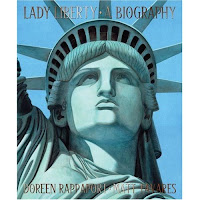
...and more or less in tune with 4th of July partying.
Pickers of nits may have a tricky time classifying the gorgeous new picture book about our emblem of freedom--
Lady Liberty: A Biography. What is noted author Doreen Rappaport doing with these free-verse poems, in the various voices of all who had a hand in creating the Statue of Liberty? The first poem is autobiographical, describing her Latvian grandfather seeing the statue for the first time. Then, from French sculptor Auguste Bartholdi to others famous and not so famous, the voices tell a true story-- how the statue was conceived and built and what it’s meant to immigrants ever since. Here is the voice of poet Emma Lazarus: “Soon when people arrive in the New World,/they will be welcomed/by a caring, powerful woman,” Rappaport writes, segueing into Lazarus’s own invocation: “Give me your tired, your poor,/Your huddled masses yearning to breathe free…” Besides being inspirational, the poems are obviously the fruit of mountains of research, and meanwhile Rappaport has collected every possible fact you could want to know into the back matter. Somber paintings by Matt Tavares swoop from unusual angles to heighten the drama. The format is large and inviting, with a “ta-da” fold-up page unveiling the completed Lady in all her magnificence. This is history, biography, and a tribute evoking genuine emotion-- all at the same time. I would call it seriously creative nonfiction (Candlewick, ages 5-8).
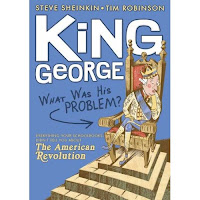
For older readers, the title alone--
King George: What Was His Problem?—may result in kids grabbing this book. The additional line of “Everything Your Schoolbooks Didn't Tell You About the American Revolution”—sounds mighty cool. Steve Sheinkin, the author of textbooks even he thinks of as tedious, has here amassed all the good stuff he claims his prim textbook editors wouldn’t allow him to use. That makes us the beneficiary of a clear, witty, fast-paced account that reads like a novel, even to the point of including some surprisingly clever dialog. Ben Franklin and grumpy John Adams, forced to share a bed one night, argue over whether the window should be open or closed. “I believe you are not acquainted with my theory of colds,” begins Franklin, lulling angry Adams into submission: “I was so much amused that I soon fell asleep.” Often one battle after another, this account might be more blow-by-blow than some kids will persist with (actually, this works well as a primer for adults). But it’s all good, important stuff that kids should know. The extensive back matter includes a “What Ever Happened to…” wrap-up of all the famous names—and a list of sources for every line of that dialog. Tim Robinson pops up with occasional sprightly black and white drawings (Roaring Brook, ages 10-14).
Guess what—I had other books I was going to include, but upon closer look, they have flaws. The children’s book world is so tiny (really) that I hate wasting space on negative reviews—even if it’s the infinite space of the Internet.
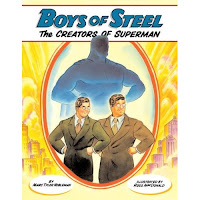
But here’s a terrific picture book biography, as tenuous as its connection to July 4th might seem--
Boys of Steel: The Creators of Superman. Possibly the most famous American cultural icon ever, Superman was born during a tough time in this country’s history. Seventy years ago, in 1938, you were either still suffering from the Great Depression or worried sick about the upcoming world war. To the rescue came two super-nerdy teens from Cleveland (who many a sensitive kid will identify with). They responded to trauma by inventing the world’s first superhero. Jerry Siegel and Joe Schuster persisted through years of rejection and later bad treatment from their publishers, searching for truth and justice as they created comic books that boosted American morale. Marc Tyler Nobleman tells his story swiftly, focusing on key dramatic moments, with a detailed afterword showing his intensive research. The stylish illustrations, in an appropriately retro palette, are by Ross Macdonald (Knopf, ages 7-10).
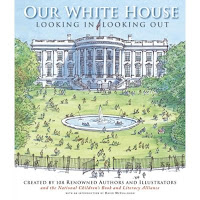
And in the realm of self-promotion, I have a one-page piece in the upcoming
Our White House: Looking In, Looking Out. It keeps company with 107 other contributors-- authors (from Katherine Paterson to Kate DiCamillo to Jon Scieszka), illustrators (from Leo and Diane Dillon to Peter Sis to Brian Selznick), and famous folks (from Charles Dickens and Walt Whitman to Richard Nixon and Dick Cheney). At 242 well-designed pages, this anthology is the mother of all tributes to American history, a multi-faceted jewel for family sharing and endless uses in the classroom (to be developed on its companion
website ). A few poems and short stories and plays sprinkle the mix, but mostly this is a nonfiction account of history as it affected our White House—the emphasis on
our—and a call to learn more about being an American citizen (Candlewick, ages 8 and up).
Sorry, I must gush about our first Fartiste signing, a giddy event at IRA in Atlanta where Paul and I signed books as fast as we could. (I would describe the sensation as like being on drugs, but you would think I’m obsessed.) I had talked up the book at the two sessions I spoke at, but most people in line had simply seen the title in the IRA program and had to have it. Yep-- all the laughing teachers and librarians were buying the book for males, a significant percent for their reluctant readers, and another major percent as gifts for husbands... fathers...even grandpas. Paul and I got even fizzier when we learned on site of our first review-- a star from Kirkus in its kindest mode: “Put that tired copy of Walter the Farting Dog away: This long-overdue tribute to Le Petomane, ‘the man who made his pants dance,’ is a total blast.”
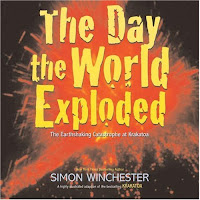 OK, on to hot-off-the-press books by other people, such as The Day the World Exploded. What kid could resist such a title? The subtitle explains all-- The Earthshaking Catastrophe at Krakatoa. It was the most violent explosion ever recorded, destroying the Indonesian island of Krakatoa in 1883. Followed by a tsunami that killed at least 36,00, it became known as the "mother" of all natural disasters. The explosion caused 13 percent of the earth's surface to vibrate, and it actually changed the way people thought about the world. Edvard Munch, to take but one example, was inspired to paint The Scream. This blend of history (of all sorts of things), science (of all kinds), and insights about the meaning of life goes down easy. In full color, it's even easy to visualize, with maps, diagrams, archival photos and etchings, plus dramatic new drawings by Jason Chin. Wherever possible, author Simon Winchester and his adapter Dwight Jon Zimmerman pull in info relevant to today; a second edition will probably mention that Krakatoa is not far from the ongoing disaster in Myanmar. A splendid example of this trend of downsizing popular adult books (in this case, Winchester's Krakatoa) into ones worthy of kids (HarperCollins, ages 10-14).
OK, on to hot-off-the-press books by other people, such as The Day the World Exploded. What kid could resist such a title? The subtitle explains all-- The Earthshaking Catastrophe at Krakatoa. It was the most violent explosion ever recorded, destroying the Indonesian island of Krakatoa in 1883. Followed by a tsunami that killed at least 36,00, it became known as the "mother" of all natural disasters. The explosion caused 13 percent of the earth's surface to vibrate, and it actually changed the way people thought about the world. Edvard Munch, to take but one example, was inspired to paint The Scream. This blend of history (of all sorts of things), science (of all kinds), and insights about the meaning of life goes down easy. In full color, it's even easy to visualize, with maps, diagrams, archival photos and etchings, plus dramatic new drawings by Jason Chin. Wherever possible, author Simon Winchester and his adapter Dwight Jon Zimmerman pull in info relevant to today; a second edition will probably mention that Krakatoa is not far from the ongoing disaster in Myanmar. A splendid example of this trend of downsizing popular adult books (in this case, Winchester's Krakatoa) into ones worthy of kids (HarperCollins, ages 10-14).
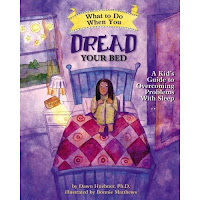 Am I the only one who’s a sucker for self-help books pitched at younger readers? When they’re done well, of course, as in the series of “What-to-Do Guides for Kids.” The newest, by child psychologist Dawn Huebner, is What to Do When You Dread Your Bed, a clever title subtitled A Kid's Guide to Overcoming Problems with Sleep. I would imagine that this 96-page paperback would be particularly handy for therapists and concerned parents (who are addressed in the introduction). But with its language, concepts, and art (cartoony illustrations by Bonnie Matthews) it's actually aimed straight at kids: "Wouldn't it be great if you could climb into bed, snuggle under your covers, close your eyes, and fall asleep without any fuss or fear?" And if you can't? You're not alone. Insomnia, nightmares, fear of the dark, crawling into bed with your parents-- such problems affect one of every three children, according to the author. So here is a workbook full of advice and practical techniques to improve sleeping skills-- an honest, head-on approach to one of life's frustrations (Magination Press/American Psychological Association, ages 9-12).
Am I the only one who’s a sucker for self-help books pitched at younger readers? When they’re done well, of course, as in the series of “What-to-Do Guides for Kids.” The newest, by child psychologist Dawn Huebner, is What to Do When You Dread Your Bed, a clever title subtitled A Kid's Guide to Overcoming Problems with Sleep. I would imagine that this 96-page paperback would be particularly handy for therapists and concerned parents (who are addressed in the introduction). But with its language, concepts, and art (cartoony illustrations by Bonnie Matthews) it's actually aimed straight at kids: "Wouldn't it be great if you could climb into bed, snuggle under your covers, close your eyes, and fall asleep without any fuss or fear?" And if you can't? You're not alone. Insomnia, nightmares, fear of the dark, crawling into bed with your parents-- such problems affect one of every three children, according to the author. So here is a workbook full of advice and practical techniques to improve sleeping skills-- an honest, head-on approach to one of life's frustrations (Magination Press/American Psychological Association, ages 9-12).
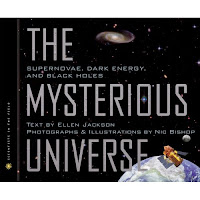
The Mysterious Universe-- yet another tempting title, and what a fascinating science book this is. Subtitled Supernovae, Dark Energy, and Black Holes, this is the newest in the well-received “Scientists in the Field” series. Focusing on the work of astronomy professor Alex Filippenko, who uses the most powerful telescopes ever, this enlightens us on discoveries that are being made right now about the big bang, our expanding universe, time travel, spiraling galaxies, dark matter, not to mention how exciting it can be to be a scientist. Ellen Jackson writes clear, high-interest text (though in some unfortunately tiny fonts, not her fault), with stark black backgrounds making NASA's and Nic Bishop's photos even more dramatic. Includes a thorough glossary for those of us not up on these ultra-mysterious matters (Houghton Mifflin, ages 9-12).
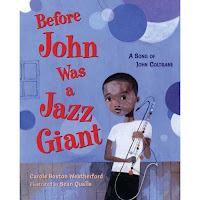 For the very young and the musically inclined (the same thing, really), Before John Was a Jazz Giant: A Song of John Coltrane makes a lovely, lyrical tribute. Coltrane wasn't born knowing how to create innovative jazz with his sax. His childhood was all about listening, lots of listening, to the sounds a child growing up in the South in the 1930s might have heard-- bones knocking around in a grandma's pot, the rhythms of a grandpa's sermons, birds singing, steam engines whistling, big bands on the radio. Carole Boston Weatherfor shapes the sounds into a flowing story, while Sean Qualls accompanies her with airy, mixed-media illustrations. A detailed Author's Note gives a full biography and a list of CDs to listen to.
For the very young and the musically inclined (the same thing, really), Before John Was a Jazz Giant: A Song of John Coltrane makes a lovely, lyrical tribute. Coltrane wasn't born knowing how to create innovative jazz with his sax. His childhood was all about listening, lots of listening, to the sounds a child growing up in the South in the 1930s might have heard-- bones knocking around in a grandma's pot, the rhythms of a grandpa's sermons, birds singing, steam engines whistling, big bands on the radio. Carole Boston Weatherfor shapes the sounds into a flowing story, while Sean Qualls accompanies her with airy, mixed-media illustrations. A detailed Author's Note gives a full biography and a list of CDs to listen to.
As for today’s outrageous title above and what on earth “sexy” could have to do with the world of children’s books, I refer you to The Craft & Business Of Writing: Essential Tools For Writing Success (Writers Digest Books). It's a brand-new tome that reprints an old article of mine with this question as its title and an elaborate case for an affirmative answer: After you swap out "sexy" for "stimulating," nonfiction clearly rules-- for readers and writers.
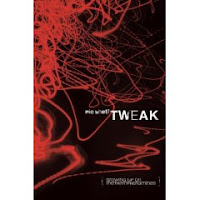
Quick, can you name a nonfiction book on the
BookSense “Children’s Interest” bestseller list? Oddly enough, there have been several of them over the past few weeks, but the big sensation is a memoir called
Tweak: Growing Up on Methamphetamines, a true story as lived and told by Nic Sheff. How low can he sink? Think as low as you can go. Not exactly the nicey-nice topics we usually blab about in our field, and this is definitely YA, not for children. Plus, in its explicit and accurate (I asked around) depiction of how crystal meth and heroin will wreck your life, this has flaws. Repetitious (way TMI), self-indulgent, writing that is raw and not "tight" (in either the literary or the kid-slang sense), and most of all a dearth of insight: despite the title, there's not much upward motion here. Some experts say that mental development ceases when a person becomes an addict, in which case Sheff-- who started at age 11-- may be stuck at an age earlier than his biological one (early twenties). Still, some kids will find this hard to put down—it’s, er, addictive—and if it leads any of them to think twice about making disastrous choices, the book is worthy of its bestsellerdom (Simon & Schuster, 2008, definitely ages 12 and up.)
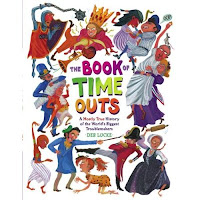
For bad choices considerably easier to talk about,
The Book of Time Outs is a diabolically clever concept book. Author/artist Deb Lucke suavely subtitles it
A Mostly True History of the World's Biggest Troublemakers. Wry text and expressive portraits feature those who were greedy (Napoleon), untruthful (Columbus), unwashed (Queen Isabella), awful to their siblings (Cleopatra), and ten more guys and gals with flaws. A unique way of looking at world history, an empathetic gift for a child who's just misbehaved (with messages like "you're not the first to have a time out," "you're not the worst," and "actions have consequences"), and irresistible to just about anyone (Simon & Schuster, 2008, ages 4-8).

Lots o’ green books sprouting all of a sudden. One of the most interesting is
How We Know What We Know About Our Changing Climate. This is actually a children's version of a university-press tome by photojournalist Gary Braasch,
Earth Under Fire: How Global Warming Is Changing the World. Now it has a text by Lynne Cherry (well-known for
The Great Kapok Tree and other environmental books), and it's subtitled
Scientists and Kids Explore Global Warming. What are butterflies, birds, flowers--not to mention a lot of super-smart people--trying to tell us? The world is starting to sizzle, and the clues are literally everywhere. In motivating readers (especially budding scientists) to save the planet, Cherry goes into substantial detail on the latest data, how researchers work, and what kids can do, with an unusually thorough section on further resources. Braasch contributes his stunning photos, wisely including kids in scenes as often as possible. Worthy of bestsellerdom, the ultimate in the recent trend of taking adult projects and distilling them for younger readers (Dawn Publications, 2008, ages 10-14).
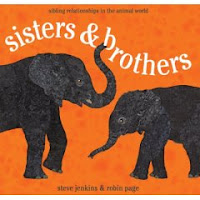
You don’t even have to like animals to find
Sisters & Brothers: Sibling Relationships in the Animal World a treat. Heck, you don't have to be a kid. This is one juicy topic. I mean, painless intro to zoology. Which creatures have
stepsiblings? (Catfish.) Which ones have
only sisters? (New Mexico whiptail lizards.) Which ones eat each other? (Black widow spiders.) Which brothers' fights escalate so terribly that one them simply has to leave? (Grizzly bears.) Sorry, it's hard to stop with the examples, and all of them are well-grounded here in simple scientific language, with pages of animal facts at the end. Score a winner for Robin Page and I.N.K.’s own Steve Jenkins, with his distinctive cut-paper collages, amusingly captioned, set against oceans of white space (Houghton Mifflin, 2008, ages 4-8).
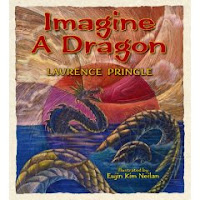
You might think
Imagine a Dragon would be collection of fluffy poems going nowhere special, but you’d be wrong. Instead, esteemed science writer Laurence Pringle has compiled a treasury of true stuff about this beast, illustrious but wholly imaginary. Starting with the earliest rumors in China, Egypt, and present-day Iraq, a dragon worked nicely as an explanation for natural disasters, scientific phenomena, anything that seemed scary. Pringle zooms around the globe to glean the primo dragon facts and legends, while lush paintings in acrylic by Eujin Kim Neilan make the pages swirl. Good example of a handsome nonfiction picture book, and an appealing choice for kids shifting out of fairy tales (Boyds Mills, 2008, ages 7-9).
No
Fartistic news this time… come back next month. Meanwhile, hope to see you at TLA or IRA.
I promised you the rest of the Cybils books and then never delivered, didn't I? Well, have no fear, my opinion is here!
Also, my Top 9 for March is up at the Biblio File store. Check it out!
But first, I showed a bunch of kids the Glister books. They have pronounced them "Awesome" and "Totally cool."
Marie Curie: Giants of Science #4 Kathleen Krull
A very well done biography of the chemist Marie Curie. I learned a lot I didn't know and Curie's life is always easy to book talk to kids who need a biography. She's not well known and she's, you know AWESOME. Krull makes this fascinating story accessible and engaging. The only problem is kid appeal-- kids will LOVE it if they ever read it, but I don't seem them ever reading it unless they have to. Curie's not famous enough and the book itself isn't eye-candy enough for them to pull it off the shelf. Also, some photos would have been nice.
The Wall: Growing Up Behind the Iron CurtainWhen I was in the 4th grade, one day we were lining up in the cafeteria to go outside for lunch-time recess. Miss Anderson (who I would have for 6th grade, but now her name is Mrs. Gosz and she teaches kindergarten) came in to tell us that the Berlin Wall was being torn down. It was the first time I had ever heard of the Berlin Wall. She was extremely frustrated that this room full of kids had no idea the history that was taking place at the moment.
Peter Sis understood. He grew up in Prague, during the Cold War. This autobiography straddles the line between graphic novel, biography, and picture book. He tells the story of a little boy who wanted to draw, of having to draw approved things, of getting in trouble for drawing the wrong thing. He tells of the story of trying to escape, of Western music, of crackdowns, of neighbors spying on neighbors.
The book is scant on background information though, so, like the 4th grader I used to be, it might confuse some children. It's beautiful and well done, but the older audience it's aimed at might need some selling, as it looks like a picture book on the surface.
Smart-opedia: The Amazing Book About EverythingThis is more of a browsing book then a sit-down and read book. Think DK Eyewitness style to a bunch of different topics. It's a fun read, but I had 2 main complaints:
1. It's heavily illustrated with cartoon-y pictures, and real photographs would have worked just as well and would have been better.
2. Because it covers everything, it doesn't cover anything in depth. Because of this, some things are glossed over to the point of no longer being entirely correct. They're not wrong, but they're not right either, you know? You lose the subtleties of a situation.
And there's the nonfiction report!
Picture Book of the Day has the round up!
Fascinating information, distilled into age-appropriate language, fully synthesized by a warm and witty authorial presence, narrated in a compelling voice… illustrated/visualized with flair… labored over by smart editors, copyeditors, fact-checkers, and designers….
Can a children’s nonfiction book be a work of art, a hallmark of civilization, a gem among gems, a---- OK, OK, I’m biased. But is it possible that we live in a golden age for children’s nonfiction books? Or have I gone over the edge?
Let’s consider some juicy titles so far in 2008.
Newcomer (to children’s books) Philip Dray tackles the harrowing subject of lynching in Yours for Justice, Ida B. Wells: The Daring Life of a Crusading Journalist. The executions of black citizens, completely outside the law, began almost as soon as the Emancipation Proclamation was signed, reached a peak of one almost every other day, and didn’t end until the 1950s. Sensibly, Dray clothes his topic within a biography of one courageous person, Ida B. Wells. She was born a slave in 1862, started teaching school at 16, and became a noted journalist. Publishing articles, giving speeches, often at great personal risk, she used her fame to shed light on the horrors of lynching, becoming the most effective crusader against it. The reader comes to know Wells in full detail, with six pages of solid information in the back matter for extra value. Stephen Alcorn’s stylized watercolors swirl with Wells’s energy and anger—just look at the cover with page after page radiating from her rising figure. Recent events in the news make this book a must-have for schools (Peachtree Publishers, 2008, ages 10-14).
Former mighty librarian Julie Cummins flexes her mighty research muscles in Women Daredevils: Thrills, Chills, and Frills. Male daredevils are all over the place, ho hum. But have you ever heard of May Wirth (billed as the Greatest Bareback Rider Who Ever Lived), Zazel (known as the Human Cannonball), Annie Edson Taylor (first person to go over Niagara Falls in a barrel), or Mabel Stark (“the world’s greatest tiger tamer and trainer”)? I haven’t, nor of any of the fourteen action-loving performers in this book. Their feats were all the more astonishing for taking place between 1880 to 1929, an era when women were supposed to sit still and not engage in sports, much less extreme ones. Cummins delves into her daredevils’ exploits, their motives, what they did in their off hours, and what else is known about their lives. A great gift for athletic kids, and a real contribution to women’s history, with Cheryl Harness’s illustrations leaping ecstatically off the page (Dutton, 2008, ages 8-12).
Befitting its rowdy subject, both text and art simply sizzle in What to Do About Alice: How Alice Roosevelt Broke the Rules, Charmed the World, and Drove Her Father Teddy Crazy!. Teddy would be Theodore, who famously moaned, “I can be president of the United States, or I can control Alice. I cannot possibly do both.” Alice liked to call her rambunctious style of living “eating up the world,” and it frequently got her in trouble at a time when proper young ladies had tiny appetites. Besides learning about one unusual woman, history-lovers will appreciate that the reader learns a lot about the President, his election to office in 1901 after Alice turned 17, and how and why she boosted his popularity. Barbara Kerley’s spirited storytelling skills are matched with newcomer Edwin Fotheringham’s ingenious depictions of one of the biggest celebrities of her day. Though we believed her dead since 1980, Alice strikes again! (Scholastic, 2008, ages 4-8).
You want more recommendations? I got plenty. What hot books have YOU noticed so far this year?
Finally—and for a book not about a woman and really silly—coming your way is my next book, called Fartiste. 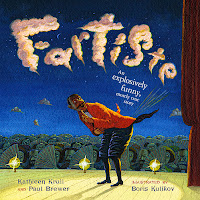
It’s a biography of a unique performance artist who had audiences literally fainting with laughter at Paris’s Moulin Rouge in the late 1800s. Joseph Pujol perfected “the art of the fart” by training his, er, muscles to mimic sound effects, tunes, stories. No, I’m not kidding, and yes, it’s all true. If you think this is gross, blame my husband, illustrator Paul Brewer, collector of extremes of information, amidst which he discovered Pujol, little-known now but in his day the most famous performer in the world. We co-wrote the story in verse, passing the manuscript back and forth to tweak the humor to its max. It’s being published by the brave souls at Simon & Schuster this June, with illustrations by Boris Kulikov that somehow quadruple the fun.
We think the book will have kids rolling on the floor. But what will the grown-ups say—the reviewers, teachers, librarians? Paul and I are on pins and needles (not the best image to associate with our promo item--whoopee cushions). Have we seriously gone over the edge?
Note: The links are to oh-so-convenient Amazon, but for actual purchases your local independent bookstore is the best friend a children’s nonfiction writer could have. I apologize for the lack of graphics, but just getting the links to Amazon in here nearly killed me.
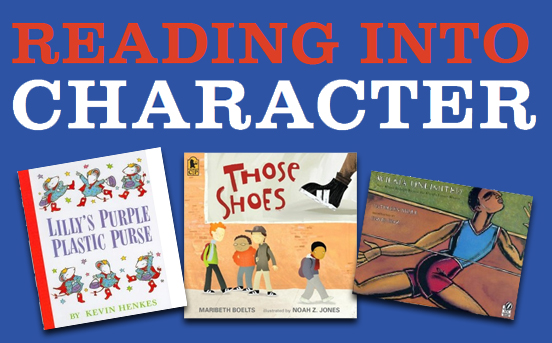





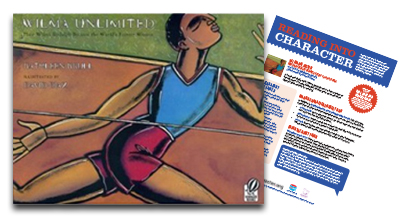

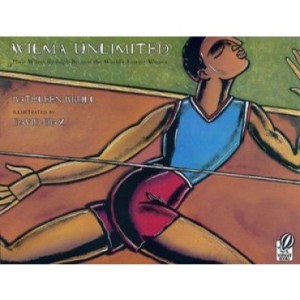

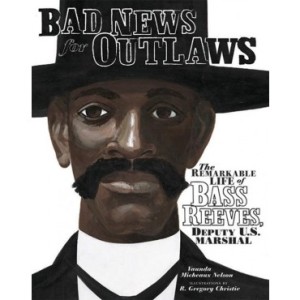
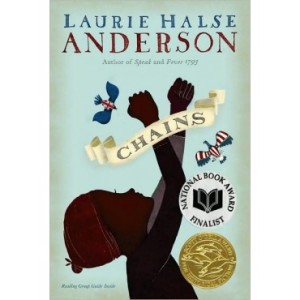
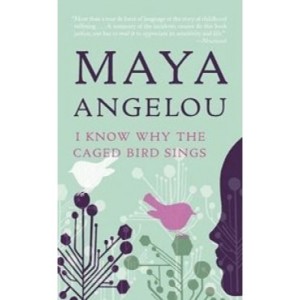





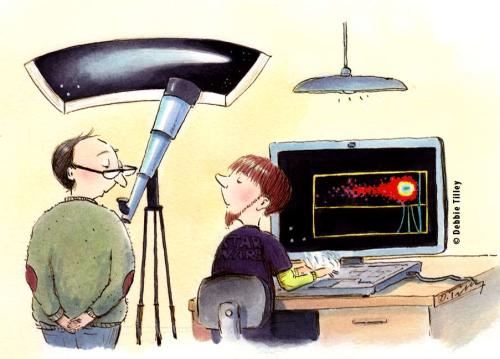
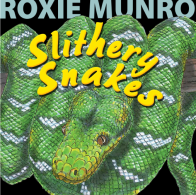



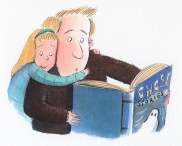


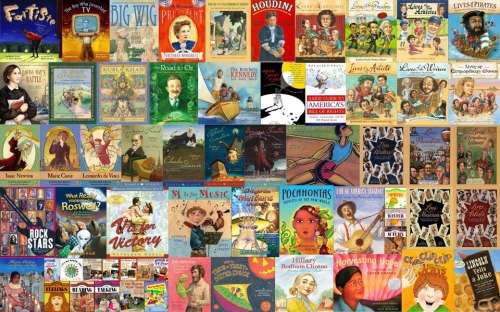

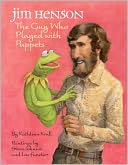
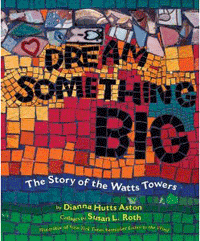














 Trust Kathryn Lasky to be first up with what may end as one of the year’s best—
Trust Kathryn Lasky to be first up with what may end as one of the year’s best— 

















 You don’t even have to like animals to find
You don’t even have to like animals to find 

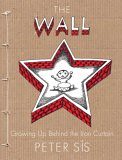


Sounds like a great ‘cup-o-tea’ for all ages.
Gee! The Amazon reviews have more fireworks than the Fourth of July. Sounds like a great book for kids.
I agree, Jane!
Hi Andrea! Yes, isn’t it incredible? It seems that today’s Tea Party folk are having problems with the real Tea Party story. And they appear suspicious of the Common Core efforts besides.
I don’t blog (is that bad?), so thanks again, Joy, for allowing me to guest blog here. Yes, on Amazon, no sooner does someone come to the book’s defense (like the eloquent Rick Clark), than some anonymous poster starts ranting. I’m serious about sending a free book to anyone here who wants to join in the Amazon debate, though I realize that’s backward–you kind of need the book first….
Keep up the good work Kathleen & bloggers! We need lots of shaking up!!
I think there is more mileage to be gotten from using Facebook, versus blogging, due to its ease-of-use and pyramid networking structure. Then blogging becomes that extra touch of cream cheese icing.
Thank you, Kathy, for guest blogging here! You are a mover and shaker via your writing, and you make it fun besides.
Thank you, Cathy, & Joy–much as I love cream cheese frosting, I can barely think of what to say on Facebook, much less a whole blog–so I am in awe of Those Who Blog.
Can’t wait to read this one to my kids! They love all your books. Beautiful illustrations too….definitely has a Jean Fritz feel.
Wow, thanks, Carlyn. Looking forward to seeing your creative response to getting tagged.